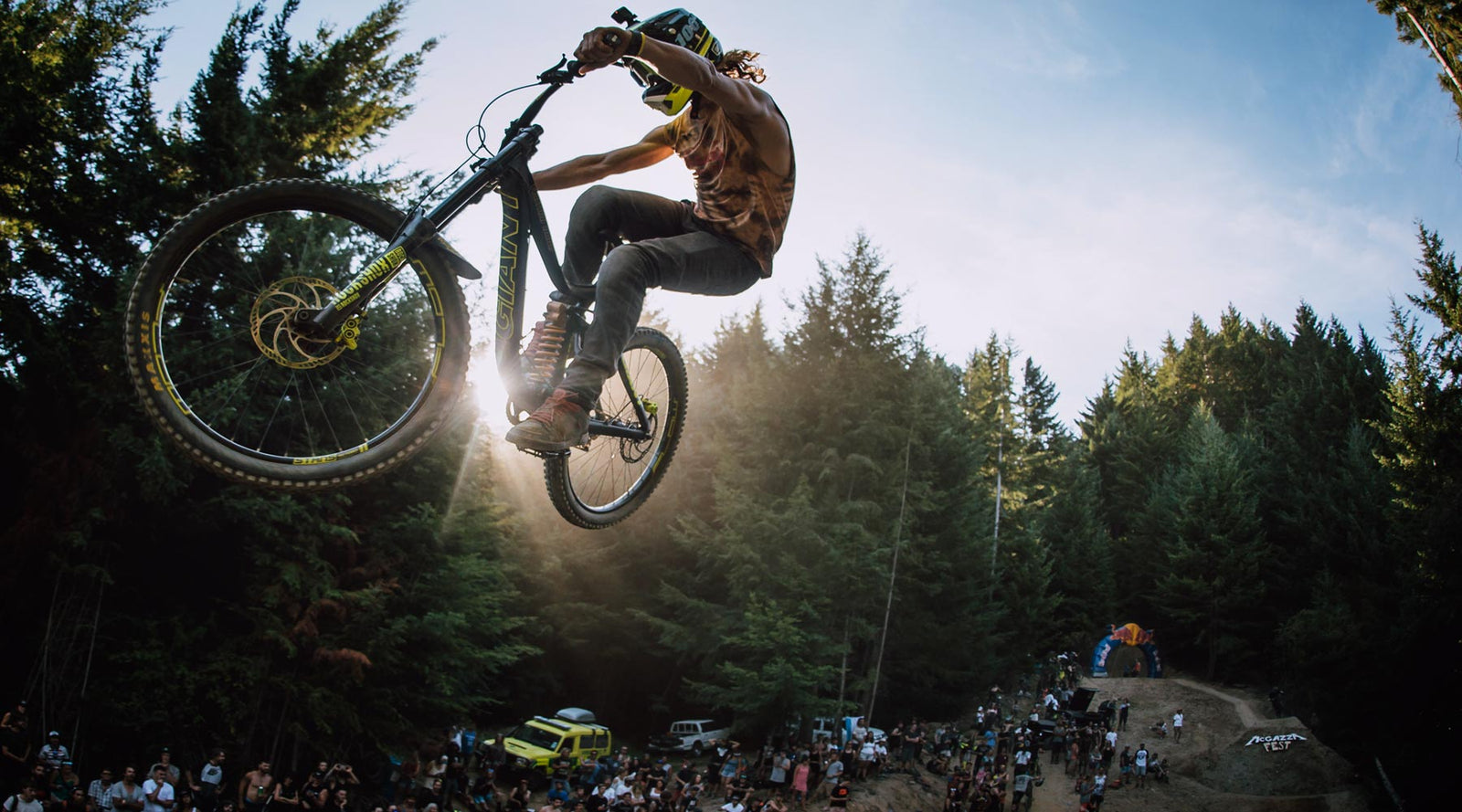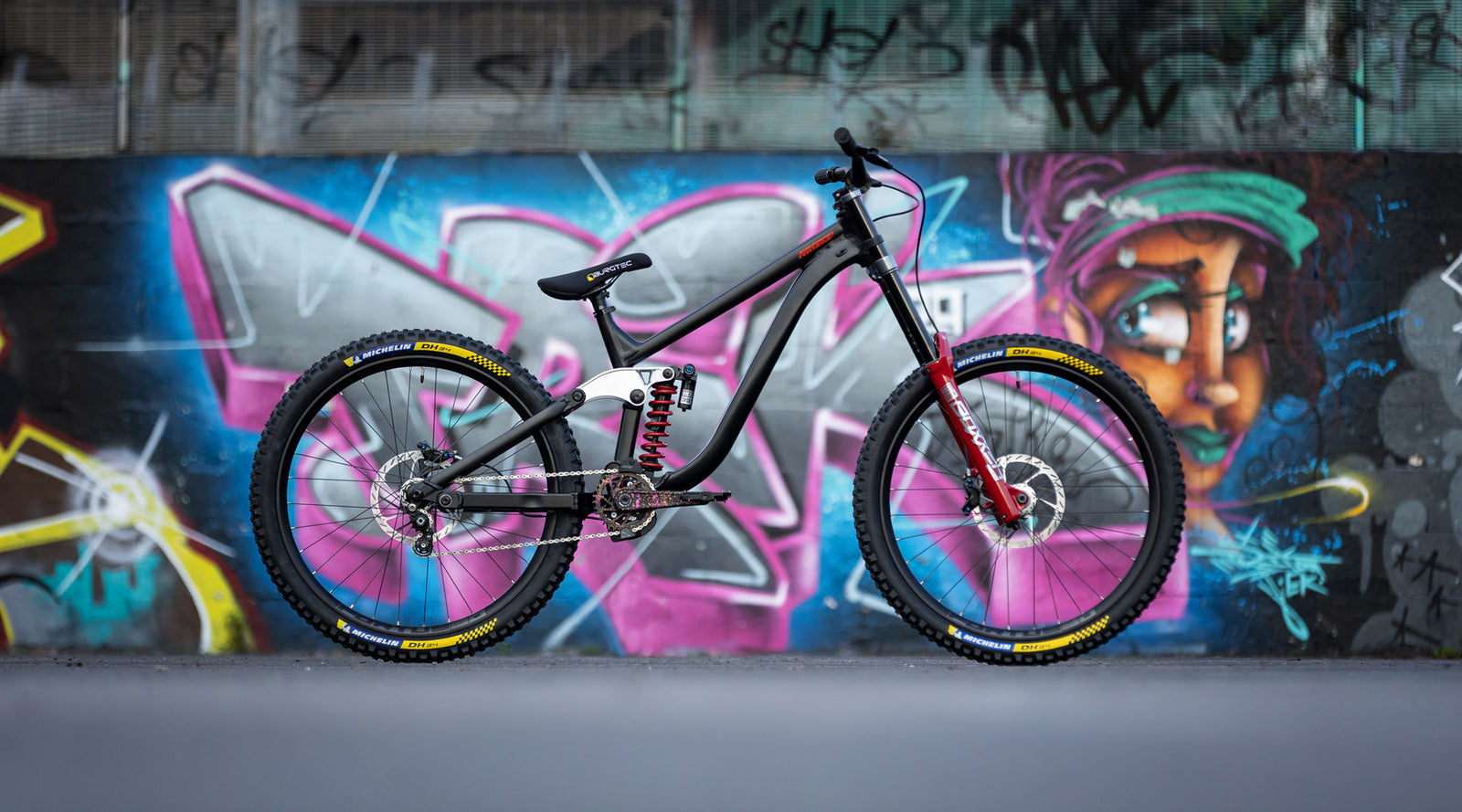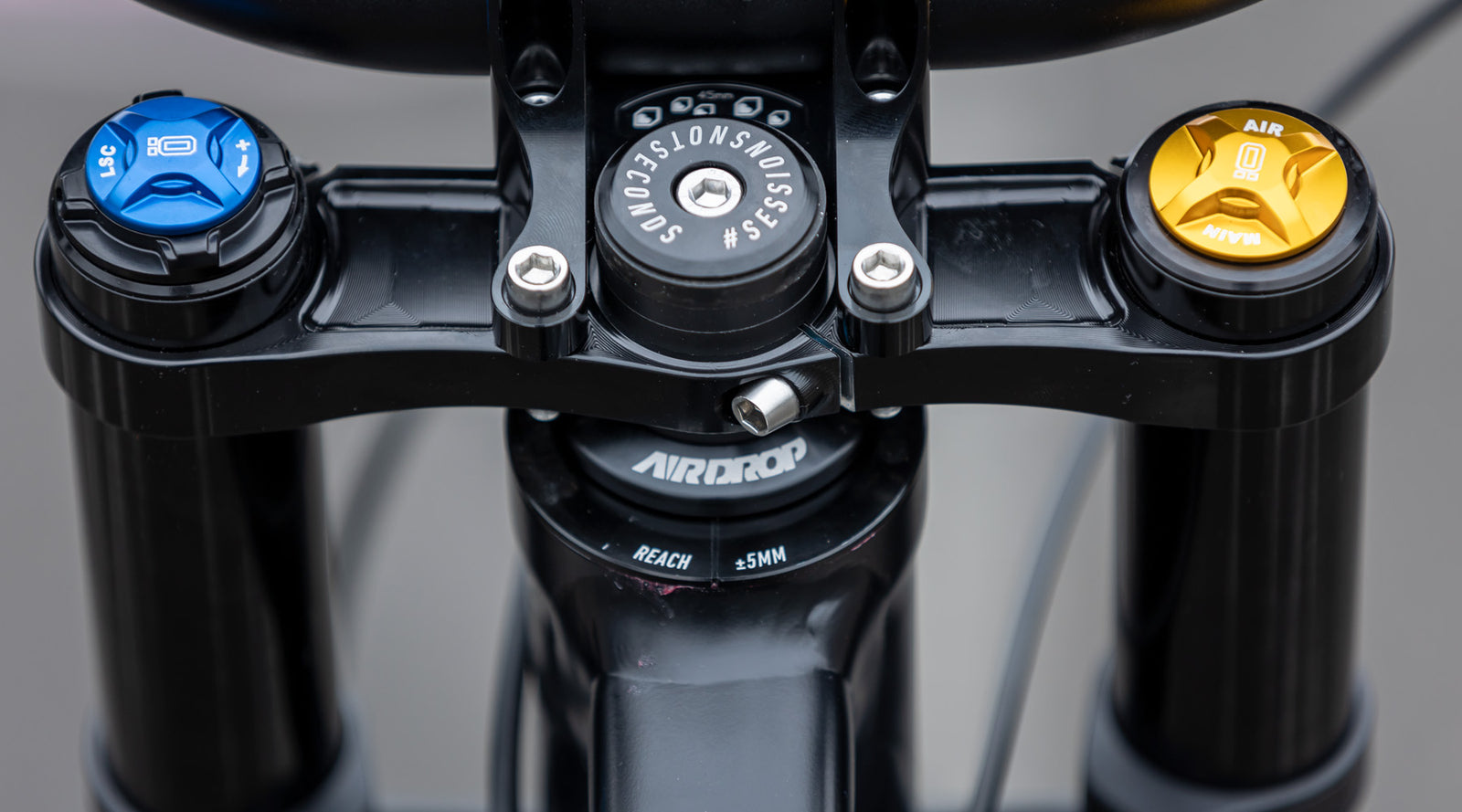
3: Why Build A Downhill Bike?
December 25, 2019
Building almost any other kind of bike would be easier, less risky and more profitable. So why would we choose to build a downhill bike?
It's probably the main question behind the whole project - and one we've asked ourselves many times. Setting up Airdrop in the first place was extremely hard, risky and never really made any logical sense. But we're four years in now, and (in some ways) we're established. So why on earth would we put ourselves back in that position all over again?
Good question.
Downhill and the MTB Industry
Downhill for the industry nowadays is primarily a marketing tool. Big budgets, big rigs, fast bikes, fast tracks, the world's fastest athletes and Warner on the mic: it's a polished and professional format. Only the big boys can afford to play at that level.
It's a recipe for success. A handful of talented and likeable characters, a smattering of podium results, garnished with professional race content. And voila! there you have it: a race proven bike, a new lease of cool and World-Cup legitimised engineering. After all if it's good enough for the pro's its certainly good enough for the punters. Big brands use downhill as vehicle to sell the rest of the range, it differentiates them from other companies and positions the brand at the top-end of the sport. Let's face it - sales of Downhill bikes alone certainly aren't paying for athletes and a team travelling the world. But it might just sway you when it comes to spending your hard earned cash on that next big purchase.
So Building a Downhill Bike Is a No-Brainer?
Not exactly. If we had our commercial heads on, then we'd never do a Downhill bike. For a tiny company such as Airdrop, putting any bike in to production is a massive undertaking, but Downhill bikes are really hard to do (or at least to do well). They're expensive and time consuming, and you can't share any of the work with the other bikes in your range. They have to stand up to the fastest speeds, the biggest hits and the worst of the abuse. They're highly specialised and just do one thing well. And at the end of all of that, very few people want to buy them.
We could put the same amount of time, effort and money into a couple of 29ers and sell truck-loads of them. Which is probably why most other brands are doing just that.
Developing the Slacker is going to be a big undertaking, but anything really worth while isn't supposed to be easy. With any new project there is a very real risk that we could get into trouble if we mess it up. It's part of the thrill of building and running a small brand. So we have to go back to the core reasons why we started Airdrop in the first place. It's not about making money. It's about taking on the challenge, enjoying the process and reaping the reward. In that sense it's got a lot in common with riding bikes - if you only ride in your comfort zone, you get bored and you don't progress. But if you push yourself, it's always worth it.
Having said all that, we're not reckless. We knew entering the market with an alloy trail bike was a risk, but we made it stick. Doing the Fade dirt-jump bike made no commercial sense, but it worked. Risk can pay off, you just need to back yourself and work bloody hard at it. We very much believe that a bike such as the Slacker has a place, and we're out to prove it. Not everyone will be into it. We don't need everyone to be into it. We just need a few people to be really into it. And we're hoping that as The Slacker Project progresses, more and more people will get behind the idea.
Why Don't Other Small Brands Do Downhill Bikes?
Maybe we're about to find out... the hard way. Or maybe they should? My guess is they don't feel the same way about downhill as we do or at least it doesn't hold the same importance to them, but that's fine and there's nothing wrong with that. If we all believed in exactly the same bikes and shared the same opinions then the mountain bike scene would be a much poorer place. What smaller brands bring to the industry is diversity and inventiveness; every brand has a different identity defined by the characters that work there and the hopes and dreams of the founders. Small brands can offer very different bikes or at least a different take on the same type of bike. That gives customers a choice - they can choose which brand best represents their own values and which bike best defines the riding they do.
For us, the gravity side of the sport has always been important and we want to bring that through in everything we do at Airdrop. A legitimate Downhill bike is the ultimate expression of that.
Living The Dream
A company I used to work for started out with a dream, to take on the industry and beat the big players at their own game. We took risks, we worked hard and it was a hell of an adventure. It went well. But once we got there, we had something to lose (or the people in charge did at any rate). Suddenly taking risks was a bit too risky, and it wasn't so much fun any more. We had to protect what we'd worked so hard to build. That was the beginning of the end, because we were looking over our shoulders all the time, instead of looking forward.
The big lesson for me to bring to Airdrop was to remember why I started it in the first place and to stick to those principles. Now that Airdrop is established, we've got to keep pushing instead of getting comfortable. We've given ourselves the chance of building a Downhill bike, so we've got to take it. If we never try to do this, we'll have wasted a golden opportunity. If I could show Airdrop to a teenaged version of myself, I reckon he'd be pretty stoked. But he'd also wonder when the Downhill bike was coming out.
The Reward Is Worth The Risk
It's hard to describe what it feels like to ride a bike that you've designed yourself. Or to get an email from a customer who's stoked on a bike you've built for them. Most of the time we're focussed on all the stuff we've got to do and how things could be better, but occasionally there is a sense of pride about what we've achieved so far. Imagine what that feeling will be if we manage to get the Slacker into production and people are out riding them...
I was once at a World Cup where Gee Atherton won on a Commencal Supreme DH (was it Fort William 2010?) and one of the things I took away from that was how unbelievably stoked Max Commencal was. It's not something the media focus on, being (quite rightly) preoccupied with the performance of the rider, the team and the bike. But it got me thinking: how must Max Commencal have felt in that moment? Not just proud for himself but also for all the people working with him. Did it make all the years of hard work and stress worthwhile? Did it validate all the tough decisions and the sacrifices he must have made? Yes it's a selfish motivation but I wouldn't mind finding out for myself.
It's Personal
Forgetting about all the business stuff, there's a personal component to this too. This is something that's important to us and we're passionate about it. If we weren't, there's no way we would ever have even started Airdrop in the first place. You need that passion and commitment to carry you through when the going gets tough; there needs to be some reward other than money when the money runs out. So in the next chapter, we'll get into what Downhill means to us, before getting into the detail of how we're going to make this all happen.
Previous Chapter:What Is The Slacker Project? |
Next Chapter:What Does Downhill Mean To Us? |
Ed Brazier
Ed is the owner of Airdrop Bikes. A former web and graphic designer, he sacked off his job one day and decided to start up a bike brand.
Leave a comment
Comments will be approved before showing up.
Also in The Slacker Project

19: The End
January 24, 2023
We made it. And although it's been a massive team effort, James has been the main man. So it's only fitting that he should have the last word...
Read More

18: The Devil's In The Details
January 13, 2023
One last chapter to nerd out on all the little details of the Slacker frame before we launch in a couple of weeks.
Read More

17: The Range
December 25, 2022
Find out all the juicy details of Slacker build kits, spec and pricing.
Email Newsletter
Our monthly email newsletter gets you access to all the good stuff before everyone else.
